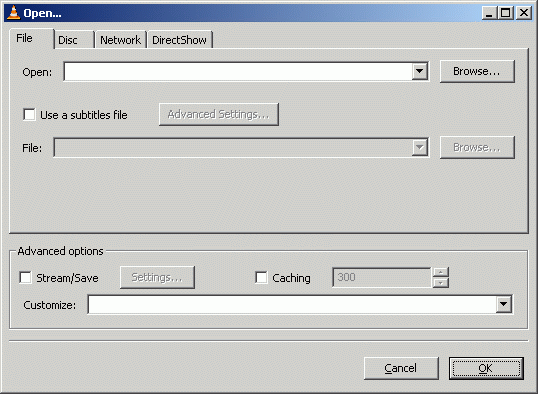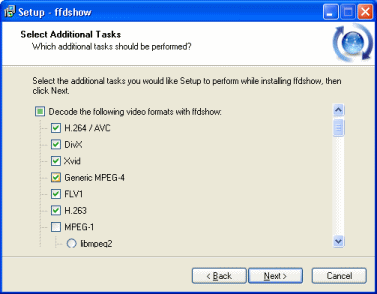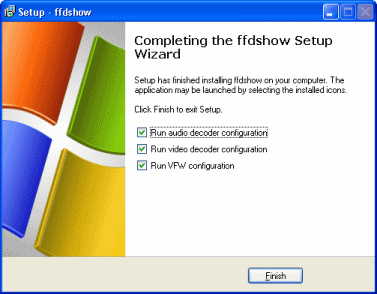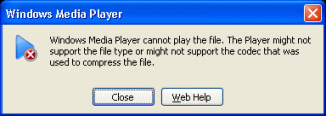How to play FLV files
Flash Video (FLV) is becoming more popular on the web since it can easily be embedded in a webpage and is supported by most operating systems via the Adobe Flash Player and web-browser plugin. It is the file format of choice for giants such as YouTube, Google Video and MySpace. Since the three listed sites contain millions of video clips, FLV files are spreading like wildfire across the web. This article will show how to get these files to play.
| Follow the Guide Author on Twitter: jamesdela@twitter |
What exactly are FLV files?
FLV is a proprietary file format that mainly delivers video content over the Internet. Specifically, the video stream included can be a variant of the H.263 standard or the much more advanced On2 VP6 codec. Video from YouTube or Metacafe use a simplified H.263, commonly refereed to as FLV1 and FLV4 (YouTube uses both, depending on what video it is, Metacafe and others use FLV4).
Since tools exist to extract the FLV content from sites like YouTube and Google Video, the number of FLV files floating around has exploded, with some people gaining huge collections of video clips on their computer in the format. For most people however, the first encounter with FLV video is an error message when you try to play it. Since audio in FLV files is most often MP3, you may get sound but no picture, based on what player you use. This article will show how it can be played with common players.
The Easiest Method
 Download and install the VLC player. The VLC package already includes software to play FLV files.
Download and install the VLC player. The VLC package already includes software to play FLV files.
You can get VLC for Windows from this URL.
 Click File and click the Open File option.
Click File and click the Open File option.Now, click the Browse button next to the first white line at the top of the window with title "Open.." and navigate through your hard drive for the video you wish to watch and select it. After you have selected the video, click OK and VLC will start playing the video you chose.
For other Operating Systems...
Mac: http://www.afterdawn.com/software/alternative_platforms/mac_software/vlc_for_mac.cfm
Linux: http://www.afterdawn.com/software/video_software/video_players/vlc_linux.cfm
Recommended Solution
 Even though VLC can play your FLV files without a hitch, some users will prefer to be able to play the videos on Media Player Classic or on Windows Media Player (slightly more complicated). Media Player Classic does technically support FLV4 video streams, but not FLV1, which leaves out quite a lot of YouTube videos. The picture to the right of this text shows what happens when Media Player Classic encounters an FLV file with an FLV1 video stream. After closing this error, it proceeds to playback the audio perfectly (usually), but no video.
Even though VLC can play your FLV files without a hitch, some users will prefer to be able to play the videos on Media Player Classic or on Windows Media Player (slightly more complicated). Media Player Classic does technically support FLV4 video streams, but not FLV1, which leaves out quite a lot of YouTube videos. The picture to the right of this text shows what happens when Media Player Classic encounters an FLV file with an FLV1 video stream. After closing this error, it proceeds to playback the audio perfectly (usually), but no video.
So how do you get Media Player Classic to play FLV1 video? The answer is FFDShow. Below are instructions on how to install and configure FFDShow to enable Media Player Classic to better handle FLV files.
Install and configure FFDShow
Step 1. The obvious and vital first step is to download FFDShow by clicking here.
 Step 2. Now you have to install FFDShow on your Windows operating system (the OS used in this example is XP Pro). Run the installer. Select your language and click Next. Now you must accept the license agreement of FFDShow; select "I accept the agreement" and click Next. Now you can choose an install directory (default is fine) and click Next again. You are now on the Select Components screen; "VfW Interface" should be selected by default, but if it is not, then please select it as shown.
Step 2. Now you have to install FFDShow on your Windows operating system (the OS used in this example is XP Pro). Run the installer. Select your language and click Next. Now you must accept the license agreement of FFDShow; select "I accept the agreement" and click Next. Now you can choose an install directory (default is fine) and click Next again. You are now on the Select Components screen; "VfW Interface" should be selected by default, but if it is not, then please select it as shown.
Click Next and select a start menu folder (default is perfectly fine again), Click Next again and now you reach the "Select Additional Tasks" screen.
 It is important now that you ensure that under "Decode the following video formats with ffdshow", FLV1 and VP5/VP6 options are selected. Scroll down further until you reach "Decode the following audio formats with ffdshow" and just ensure that MP3 is selected (these settings are usually default). When you click Next, you will come to a "Management of compatibility issues" screen.
It is important now that you ensure that under "Decode the following video formats with ffdshow", FLV1 and VP5/VP6 options are selected. Scroll down further until you reach "Decode the following audio formats with ffdshow" and just ensure that MP3 is selected (these settings are usually default). When you click Next, you will come to a "Management of compatibility issues" screen.
It is recommended to leave the option to use FFDShow for video only with the programs listed beneath to prevent any compatibility problems with other software. Media Player Classic and Windows Media Player will be in here. Click Next and you will get the same screen again, this time for audio. Click Next and select your speaker setup (if you only have 2 speakers, its stereo). Click Next again and then "Install".
 When the installation is finished, the installer will give you the option to open some configuration windows. Here we will ensure that FLV will work with plays like Media Player Classic. Select the options and click Finish. Three new windows will now pop up. The only two that you really need will be titled "ffdshow video decoder configuration" and "ffdshow video encoder configuration". Select the "ffdshow video decoder configuration" window.
When the installation is finished, the installer will give you the option to open some configuration windows. Here we will ensure that FLV will work with plays like Media Player Classic. Select the options and click Finish. Three new windows will now pop up. The only two that you really need will be titled "ffdshow video decoder configuration" and "ffdshow video encoder configuration". Select the "ffdshow video decoder configuration" window. Step 3. Under the "ffdshow video decoder configuration" window, make sure codecs is selected on the left (just as in picture). To the right you will see a list of video formats and what's used to decode them. On this list you will see FLV1 (selected in picture), now click inside the cell beside FLV1 in the decoder column and you will get the option to select libavcodec (again,. shown in picture).
Step 3. Under the "ffdshow video decoder configuration" window, make sure codecs is selected on the left (just as in picture). To the right you will see a list of video formats and what's used to decode them. On this list you will see FLV1 (selected in picture), now click inside the cell beside FLV1 in the decoder column and you will get the option to select libavcodec (again,. shown in picture).
Now, several formats below FLV1 you will also see VP6F, again, select libavcodec as decoder. Click Apply. You are now finished with this window. Close it by clicking OK and now select the "ffdshow video decoder configuration" window.
 Step 4. Under the "ffdshow video encoder configuration" window, select the Decoder tab and on the left, click Codecs (as illustrated in picture). Again, as with the previous window, to the right there is a list of video formats and you can change their decoder or disable them. Make sure that FLV1 is set to libavcodec as before, and the same setting for VP6F as before (see picture). When you are done, click Apply and close the window by clicking OK.
Step 4. Under the "ffdshow video encoder configuration" window, select the Decoder tab and on the left, click Codecs (as illustrated in picture). Again, as with the previous window, to the right there is a list of video formats and you can change their decoder or disable them. Make sure that FLV1 is set to libavcodec as before, and the same setting for VP6F as before (see picture). When you are done, click Apply and close the window by clicking OK. Success? Try playing the FLV now with your favorite player (see below if you are using Windows Media Player, which requires an extra couple of steps). If you think you forgot something while configuring FFDShow, you can access the settings again under ffdshow (or whatever you determined) in the Start Menu. Simply open VfW Configuration and Video decoder configuration. Move on now if you need to get FLV files to work with Windows Media Player.
Success? Try playing the FLV now with your favorite player (see below if you are using Windows Media Player, which requires an extra couple of steps). If you think you forgot something while configuring FFDShow, you can access the settings again under ffdshow (or whatever you determined) in the Start Menu. Simply open VfW Configuration and Video decoder configuration. Move on now if you need to get FLV files to work with Windows Media Player.Windows Media Player
 Even after installing and configuring FFDShow, Windows Media Player needs one more thing to work, an FLV Splitter. Decoders are installed for the video and audio, but Windows Media Player needs to be able to process the FLV container that holds both streams. Open Source FLV Splitter is an excellent piece of software if you need to be able to use Windows Media Player for FLV.
Even after installing and configuring FFDShow, Windows Media Player needs one more thing to work, an FLV Splitter. Decoders are installed for the video and audio, but Windows Media Player needs to be able to process the FLV container that holds both streams. Open Source FLV Splitter is an excellent piece of software if you need to be able to use Windows Media Player for FLV.
Download Gabest Flash Video Splitter for Windows XP/2000/2003 from:
http://www.afterdawn.com/software/video_software/codecs_and_filters/flv_splitter.cfm
Download Gabest Flash Video Splitter for Windows 95/98/ME from:
http://www.afterdawn.com/software/video_software/codecs_and_filters/flv_splitter_win98.cfm
 To install the FLV Splitter is simple. Run the executable file that you downloaded, click Install and then click Close. Now to test it out, try to open your FLV files with Windows Media Player. Right click the FLV file, choose "Open With" and then select the "Select Program" option. From the list that pops up, select Windows Media Player. If the splitter is installed and FFDShow configured correctly, the file should play back without a hitch. If you get a message alerting you that the extension is not recognized by Windows Media Player, select "Don't ask me again" and click Yes.
To install the FLV Splitter is simple. Run the executable file that you downloaded, click Install and then click Close. Now to test it out, try to open your FLV files with Windows Media Player. Right click the FLV file, choose "Open With" and then select the "Select Program" option. From the list that pops up, select Windows Media Player. If the splitter is installed and FFDShow configured correctly, the file should play back without a hitch. If you get a message alerting you that the extension is not recognized by Windows Media Player, select "Don't ask me again" and click Yes.Troubleshooting and useful links
If you want to dive into the world of digital video, but want to first learn even the most common lingo, here are some good links for you:
· Glossary definition for FLV
· What is a codec?
· What does "encoding" mean?
· AfterDawn.com: Video term glossary
· AfterDawn Forums: Playback problems
Additionally, if you prefer to use a solution where you use a separate video player software and a separate set of codecs, you might want to try out different video players as well. We have a good selection of freeware players available on our site, but here are some of our favorite ones:
Media Player Classic
Zoom Player
It should be noted that sometimes, despite all the efforts, analysis and trial&error you've applied in order to get a video to play, it just wont. Quite often in those cases, even when none of the file analytics programs (such as AVIcodec or VideoInspector) seem to help, you can come to a conclusion that the file is corrupted. If that is the case, you're pretty much out of luck and might want to try to re-download the file in order to see whether the problem was with the download process itself.
Version History
v1.0 - 23rd of March, 2007 by Dela
Written by: James Delahunty

